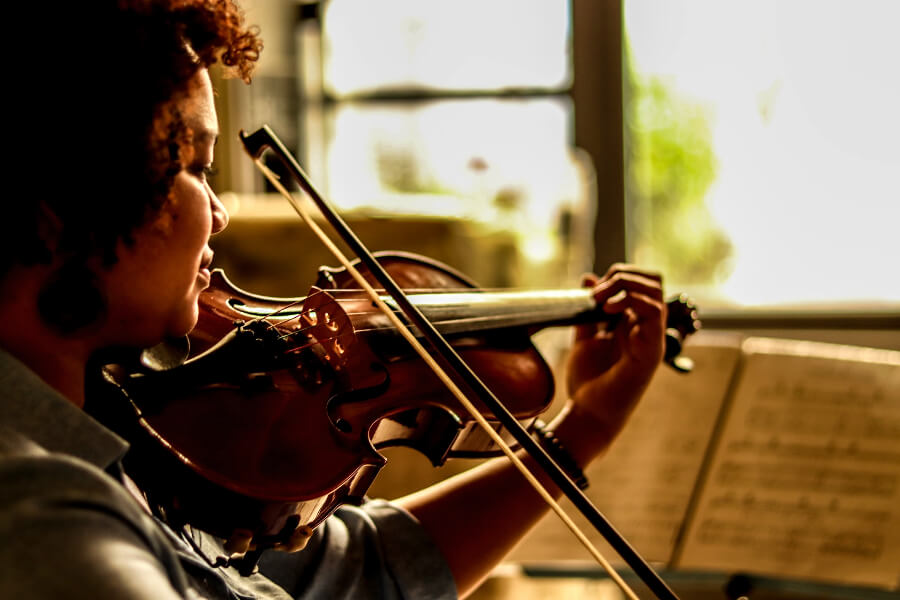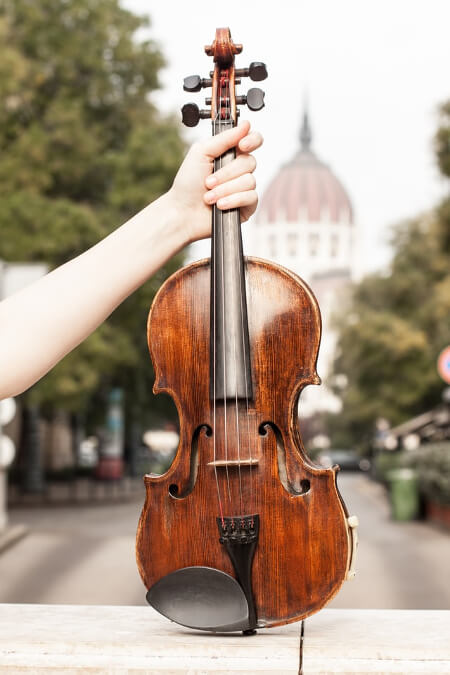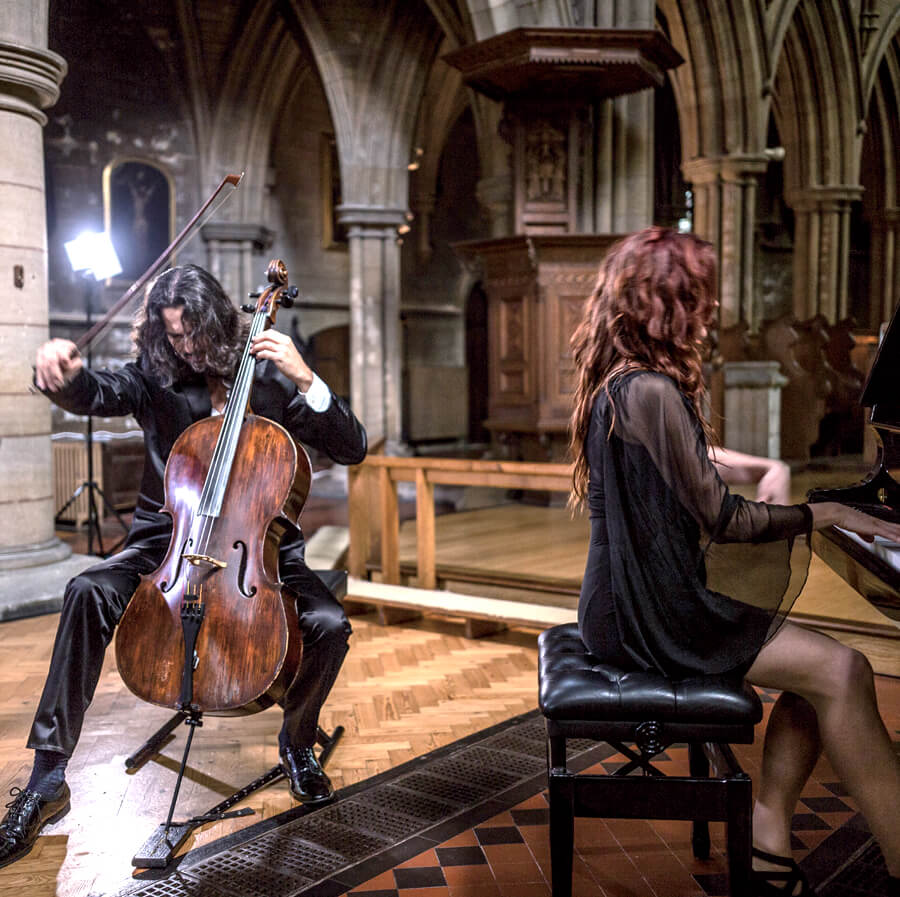Violin & Cello
When you look at a string instrument, the first thing you'll probably notice is that it's made of wood, so why is it called a string instrument? The bodies of the string instruments, which are hollow inside to allow sound to vibrate within them, are made of different kinds of wood, but the part of the instrument that makes the sound is the strings, which are made of nylon, steel, or sometimes gut. The strings are played most often by drawing a bow across them. The handle of the bow is made of wood and the strings of the bow are actually horsehair from horses' tails! Sometimes the musicians will use their fingers to pluck the strings, and occasionally they will turn the bow upside down and play the strings with the wooden handle.
The strings are the largest family of instruments in the orchestra and they come in four sizes: the violin, which is the smallest, viola, cello, and the biggest, the double bass, sometimes called the contrabass. (Bass is pronounced "base," as in "baseball.") The smaller instruments, the violin, and viola make higher-pitched sounds, while the larger cello and double bass produce low rich sounds. They are all similarly shaped, with curvy wooden bodies and wooden necks. The strings stretch over the body and neck and attach to small decorative heads, where they are tuned with small tuning pegs.
All levels. All ages.
Beginning students are taught to develop a proper and natural hold of the instrument and view it as a natural body extension. The names and pitches of the open strings and finger numbers are then explored, and bowing and finger positions are taught to enable the playing of simple melodies and exercises. The importance of intonation, phrasing, and musicality are stressed early on to allow an increase in difficulty and creative expression. The study of scales, arpeggios, and technical exercises propel the student forward so he or she will soon be able to choose styles of music that are the most exciting. Students will also engage in teacher duets to sharpen their ensemble playing and timing. Advanced students will study concertos and pieces from the solo repertoire to polish their performing and practicing skills.
Your Teacher
Voice Training & Vocal Coaching, Piano, Guitar, Cello, Songwriting
Amber Fasquelle
Cultivate your ensemble skills to a high level.
Professionally prepare for your exam or performance. Expand your musical knowledge and performance experience.
These private group lessons are suitable for you, whether you are seeking to professionally prepare for exams and performances or looking for a fun, enriching opportunity to play in an ensemble with friends, neighbors, and colleagues. We will encourage sharing of musical ideas and offer new ways to look at music-making and performance practice while using teamwork and communication to refine the ensemble's work.
Begin Now! Transform Your Life Through Music
Get articles, concert news, and exclusive invitations delivered right to your inbox.
About us
We specialize in voice training and vocal coaching and love teaching how to play an instrument. We are helping students become better musicians by fostering skill, appreciation, and enjoyment of music in players of all ages. By providing thorough and exceptional music education in a comfortable, resourceful environment, teachers can develop meaningful partnerships with students and families to promote a lifelong relationship with music and creativity.
Quick Facts
© 1985 - 2024 - KARA JOHNSTAD · ALL RIGHTS RESERVED
BUILT WITH LOVE BY VOICE YOUR BIZ™ | Login




